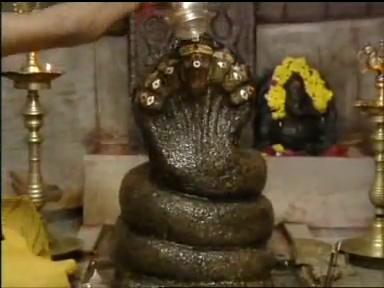Ugrasana (ferocious pose) |  |
 | Ugra - ferocious
This is an advanced stage of Ekapadhastasana. This asana is not easy to perform as suggested by its name (ferocious pose). Otherwise, there is no similarity between the name and the asana.
|  |
 | Taking the asana positionInitial Position - Sitting Position
| 1. | Spread the legs as far apart as possible, with the toes pointing up to the ceiling. |
| 2. | Inhale and lengthen the spine. |
| 3. | Hold the left toes with the left hand and right toes with the right hand. |
| 4. | Exhale and bend forward from the hips. If possible, touch the forehead to the ground. Breathe normally. |
|  |
 | The asana positionIn this position, the legs are spread as far apart as possible. The hands are holding onto the respective toes and the upper body is folded forward towards the ground. The back is kept straight and ideally, the forehead should be touching the ground. With practice, the chest and abdomen may also be touching the ground.
|  |
 | Releasing the asana position
| 1. | Exhale and while inhaling, straighten out the waist. |
| 2. | Release the hands and place the arms by the side of the hips, with the palms on the ground. |
| 3. | Join both legs and come back into sitting position. |
|  |
 | Anatomical focusThe stretch in the inner thighs and along the entire back side of the body, including the hamstrings, buttocks, back and neck.
|  |
 | AwarenessOn the relaxation of the back muscles.
|  |
 | Do's
| 1. | Keep the legs straight. |
| 2. | Relax your body into the posture with every exhalation. |
| 3. | Keep the back straight. |
| 4. | Keep the toes pointing up. |
|  |
 | Dont's
| 1. | Jerk your body forcefully in order to touch the forehead to the ground. |
|  |
 | Benefits
| 1. | The pressure against the abdomen gives an intense massage to the abdominal organs and glands, which helps to increase the blood circulation and efficiency of the organs and glands. |
|
| 2. | Stretches the hamstrings and inner thighs. |
| 3. | Increases flexibility in the hip joints. |
| 4. | Removes excess weight from the abdominal and pelvic areas. |
|  |
 | Therapeutic application
| 1. | Disorders of the uro-genital system |
| 2. | Menstrual disorders |
| 3. | Sluggish liver |
| 4. | Diabetes |
| 5. | Colitis |
| 6. | Kidney complaints |
| 7. | Bronchitis |
| 8. | Eosinophilia |
|  |
 | Precautions & contra-indications
| 1. | Those suffering from slipped disc, sciatica or other severe spinal problems should avoid this asana. |
| 2. | This asana is also contraindicated for those suffering from high or low blood pressure. |
|  |
 | DurationThe asana should be performed for at least 30 seconds. With daily practice, the duration can be increased to 2 minutes.
|  |
 | Variations & tipsIf it is not possible to catch the toes with your hands, it is ok to simply place the arms on the ground. It is more beneficial to keep the back straight and bend from the hips, than to hunch the back in order to catch the toes or touch the forehead to the ground.
It may also be easier if you do not spread the legs to your limit. This will relieve the strain on the inner thighs.
Once you can touch your forehead to the ground, work towards relaxing the muscles further so that gradually, the front of the shoulders, chest and even abdomen touches to the ground.
|  |
 | Preparatory poses
| 1. | Paschimottanasan Preparatory Movement |
| |
 | Preparatory Movements 6 and 9 |
 | Sit with legs slightly apart. Perform 'grinding the mill' movement 5 times in each direction. |
 | Legs slightly apart, bend forward and touch the right foot with the left hand looking over the right shoulder, repeat 5 times on each side. |
|
 | Padmasan Yogamudra Type 1 to front and sides. |
 | Lie in supine position with arms overhead, contract abdomen, sit up and and try to touch hands to toes or beyond, then lie back in supine, repeat 5 times. |
|
|
| 2. | Ardha Paschimottansana |
| 3. | Paschimottanasana |
| 4. | Ekapadhastasana |
|  |
 | Follow-up poses |  |
 | Ancient texts |



కామెంట్లు లేవు:
కామెంట్ను పోస్ట్ చేయండి